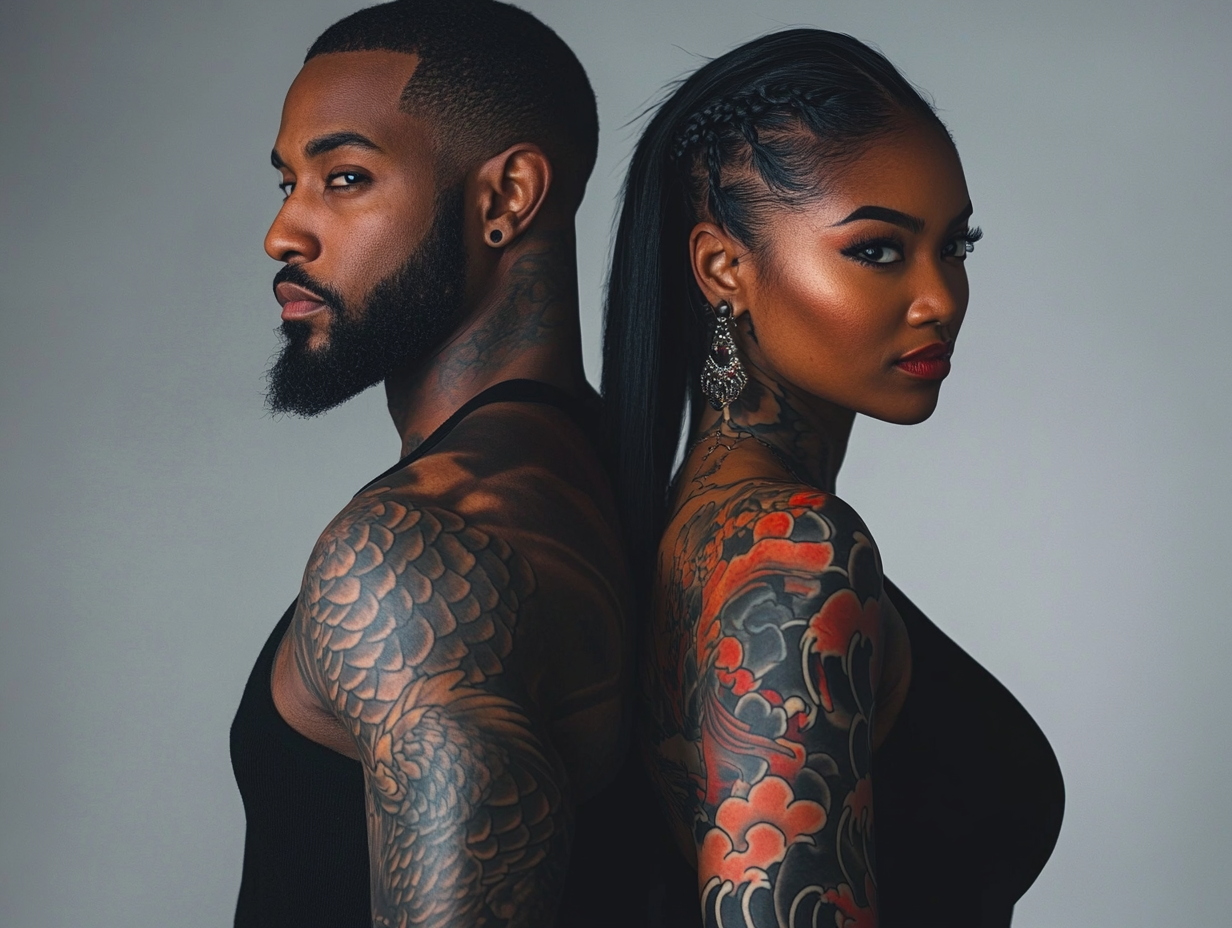Tattoo art has long been a powerful form of self-expression, transcending cultural boundaries and evolving alongside society. In East Asia, the tattoo scene has traditionally been influenced by local customs and aesthetics, but in recent years, the infusion of diverse cultural backgrounds has led to a vibrant tapestry of styles. Among these influences, the body tattoo art of Black people in East Asia is a compelling subject that reflects a blend of heritage, identity, and contemporary artistry. Here are five examples that showcase this unique intersection.
1. Afrocentric designs
Afrocentric designs have gained popularity among Black individuals living in East Asia, serving as a celebration of African heritage. These tattoos often feature traditional motifs such as tribal patterns, animals, and symbols that represent strength, resilience, and cultural pride. Artists in cities like Tokyo and Seoul have embraced these designs, incorporating them into their portfolios to cater to a growing clientele seeking to express their identity.
In many cases, these tattoos serve as a bridge between cultures, allowing individuals to honor their roots while adapting to their current environment. The bold lines and intricate patterns characteristic of Afrocentric resonate with the rich history of African art, making them a striking choice for those wanting to showcase their heritage.
2. Blending traditional Asian motifs
A fascinating trend in body tattoo art among Black individuals in East Asia is the blending of traditional Asian motifs with African-inspired designs. This fusion creates unique pieces that reflect the wearer’s cultural background while also embracing the local artistic influences of their environment. For example, a tattoo might incorporate the elegant lines of a Japanese koi fish alongside tribal patterns, symbolizing both perseverance and cultural pride.
This melding of styles not only creates visually stunning artwork but also fosters a sense of community and understanding between different cultures. As tattoo artists become more open to diverse influences, the possibilities for creative expression expand, resulting in innovative designs that resonate with a broader audience.
3. Personal narratives through ink
For many Black individuals in East Asia, tattoos serve as a medium for storytelling and self-expression. Each design can represent a significant life event, a personal struggle, or a triumph over adversity. This narrative aspect of art allows individuals to connect with their own history and experiences while also sharing their stories with others.
In East Asia, artists are increasingly skilled at capturing these personal narratives through their designs. Whether it’s a symbol representing family heritage or a quote that holds deep meaning, the ability to translate personal experiences into body art creates a powerful connection between the wearer and their tattoo. This trend highlights the importance as a form of self-identity, particularly for those navigating multiple cultural landscapes.
4. Contemporary street art influence
The influence of contemporary street art has also made its way into the scene, particularly among Black artists and individuals in East Asia. This style often features bold colors, abstract shapes, and graffiti-like elements, making them vibrant and eye-catching. Artists who specialize in street art-inspired tattoos often draw on urban culture, hip-hop influences, and the aesthetics of modern life.
This approach to art allows for a dynamic expression of identity that resonates with younger generations. In cities where street culture thrives, such as Seoul and Tokyo, the blending of street art and tattooing has created a unique niche that celebrates individuality and creativity. For Black individuals in these urban settings, street art tattoos can serve as a powerful statement of identity, resilience, and cultural pride.
5. Representation and visibility
The growing presence of Black individuals in the tattoo scene in East Asia has led to increased representation and visibility within the art form. Tattoo conventions, workshops, and exhibitions are becoming more inclusive, showcasing the work of Black artists and their contributions to the industry. This shift not only highlights the diversity of art but also fosters a greater appreciation for the cultural narratives that inform these designs.
As more Black tattoo artists establish themselves in East Asia, they bring their unique perspectives and experiences to the table. This representation is crucial in challenging stereotypes and promoting understanding among different cultural groups. The visibility of Black tattoo art in East Asia serves as a reminder of the power of art to transcend boundaries and connect people from diverse backgrounds.
Conclusion
The body tattoo art of Black people in East Asia is a fascinating intersection of culture, identity, and creativity. From Afrocentric designs to the blending of traditional Asian motifs, these tattoos reflect personal narratives and celebrate heritage in a way that resonates deeply with individuals. As the scene continues to evolve, the growing representation of Black artists and their unique contributions will undoubtedly enrich the artistic landscape in East Asia.
In a world where cultural exchange is increasingly common, the fusion of diverse influences in body tattoo art serves as a powerful reminder of our shared humanity. They are not just ink on skin; they are stories, symbols, and expressions of identity that connect us all. Whether through bold Afrocentric designs or contemporary street art influences, the art of Black individuals in East Asia is a vibrant testament to the beauty of diversity and the power of self-expression.












